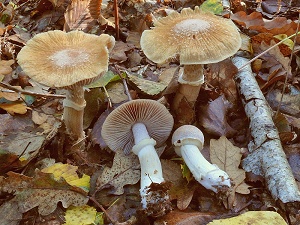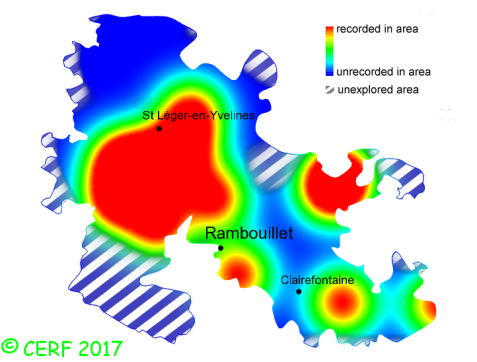| Cortinarius caperatus (Pers.:Fr.) Fr. |
|
|
|
|
|
|
The cap is yellow to brown yellow, convex then expanded, with a broad central umbo; its margin is with white veil remnants. The cap surface is covered with silvery-white cobweb-like fibrils, especially towards centre, not viscid nor sticky. The stem is whitish, striate above ring, slightly swollen to bulbous, with sometimes yellowish veil remnants at the stem base, and a striate ring. The flesh is whitish, with lilac shades, unchanging; its taste is mild; the odour is pleasant; its texture is fibrous. The gills are yellow then rusty brown, adnate, crowded . The spore print is rusty brown. This species is mycorrhizal. It grows on the ground, in coniferous (sometimes deciduous) woods, in heath, on a rather acid soil. The fruiting period takes place from June to November.
Chemical tests : none. Distinctive features : Pale ochre cap, bell-shaped then flattened, thick and with a fine white dew at its centre (as if dusted with meal) and with a radially wrinkled margin; toothed gills with a brighter edge; on acid soil Cortinarius caperatus is infrequent and scattered in the forest of Rambouillet, and is occasional, more generally speaking . | ||
|
page updated on 14/01/18

